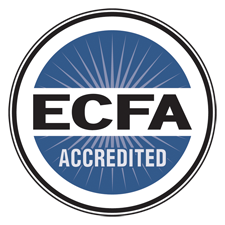Alice C. Linsley
Today there are equal opportunities for women to receive the
education and training necessary to advance in the many fields of science. It has been claimed, however, that in the past women played a minimal role in Science
and the contribution of Christian women is even more minimal due to male
dominance in the Church. While science has certainly been
dominated by men, there is no doctrine or tradition in Christianity that
inhibits women from being involved in science. If men have dominated, it is
because in centuries past they were the ones who received the more advanced
education.
It is also likely that the contributions of women in science and technology have been overlooked rather consistently by both secular historians and
Christian historians. If the historian is looking for inventions and
discoveries that bring about paradigm shifts, they will miss the
contributions of many women. For centuries, women were discovering the healing
properties of plants (pyto-medicine), experimenting in chemistry to create dyes
(biblical Lydia), and exploring methods for creating fibers and developing
textile technologies. They invented things like buttons and butter churns, but
these do not lead to paradigm shifts, only to an improved quality of life.
This segment of "Christian Women in Science, Technology and
Engineering” focuses on three women who left a mark in Science and who were
known to be women of faith: St. Hildegard, Maria Agnesi, and Mary Anning.
Hildegard of Bingen (1098 – 1179) was a Benedictine abbess, writer,
composer, philosopher, polymath, and perhaps Germany's first female physician. She
conducted and comprehensive studies of the medicinal properties of herbs and
minerals, and wrote Physica, a
text on the natural sciences. She founded two monasteries; one at Rupertsberg in
1150 and the other at Eibingen in 1165.
Attention to women of the medieval Church has led
to interest in Hildegard, particularly her musical compositions which represent
one of the largest repertoires among medieval composers.
On 7 October 2012, Pope Benedict XVI named her
a Doctor of the Church.
Maria Gaetana Agnesi (1718
– 1799) was an Italian mathematician and philosopher. She is credited with writing the first book discussing both
differential and integral calculus and was an honorary member of the
faculty at the University
of Bologna.
Maria was a child prodigy. She could speak
both Italian and French at five years of age. By her
thirteenth birthday she had acquired Greek, Hebrew, Spanish, German, and
Latin. When she was nine, she composed and delivered an hour-long speech in
Latin to some of the most distinguished intellectuals of the day.
She devoted the last four decades of her life to studying
theology, the writing of the Church Fathers, and to serving the poor.
Mary Anning (1799 – 1847) was a
British fossil collector and paleontologist who became known for
important finds she made in the Jurassic marine fossil beds at Lyme Regis in Dorset, where she lived. Her work contributed to
fundamental changes in scientific thinking about prehistoric life and the
history of the Earth. Mary's work drew considerable attention in England as most people believed in a young Earth and regarded this to be a Biblical view.
Fossil collecting was a popular pastime in the late 18th and
early 19th century, but gradually developed into a science as the importance of
fossils to geology and biology became better understood. Anning searched
for fossils in the area's Blue Lias cliffs, particularly during the winter
months when landslides exposed new fossils that had to be collected quickly
before they were lost to the sea. It was dangerous work, and she nearly lost
her life in 1833 during a landslide.
In 2010, the Royal
Society included Anning in a list of the ten British women who have
most influenced the history of science.
Mary Anning, though raised Congregationalist, regularly
worshiped with her family in the Anglican Church.
Watch for Part II - More Christian Women in Science, Technology and Engineering.





